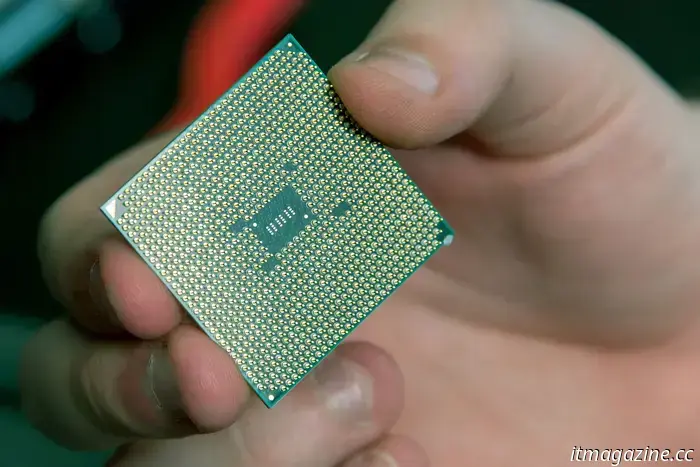
AMD's perspective on the longevity of the AM4 socket, the introduction of AM5, and what lies ahead.
When AMD introduced its Ryzen processors with the new AM4 socket in 2017, it marked a significant shift in the market. AMD was revitalizing competition against Intel. While Ryzen was making quad-core processors less relevant, it also brought forth a concept of socket longevity, allowing gamers to gradually upgrade their systems over time instead of overhauling their setups every few years.
AM4 became AMD’s primary socket for over five years. Although AMD has since transitioned to newer sockets and CPUs, the extended lifespan of AM4 has emerged as one of its key features, setting an expectation for AMD fans regarding the longevity of AM5 and future sockets.
Though AM4's durability has taken many by surprise, it was a deliberate strategy from the outset, as AMD's product management lead for gaming and workstations, Sourabh Dhir, explained during an interview with DigitalTrends.
Planning for the long term
"AM4 is nearing its eighth year, which is remarkable," Dhir stated. "When we think about our platform and roadmap, one of our main priorities is how we can best serve our end consumers."
"Our core strategy at AMD has always been to reduce the burden on users and design platforms that can endure through multiple generations."
This was the intention behind AM4, and it applies to AM5 as well. The current AMD socket is designed to be supported until 2028, even if a new AM6 socket emerges before that. While AMD prioritizes consumer needs in creating long-lasting products, Dhir acknowledged the business advantages as well.
For users with AM4 or AM5 motherboards looking to upgrade, AMD's commitment to socket longevity means they'll only need to purchase a new CPU instead of replacing the entire motherboard and memory. This strategy also encourages those consumers to stick with AMD CPUs, as switching brands would necessitate a new motherboard.
"They can definitely just buy the next generation of AMD CPU,” Dhir noted. “From this perspective, it serves as a beneficial business strategy, creating a win-win for the entire ecosystem."
Contrary to my assumption that motherboard manufacturers would prefer more frequent socket changes to prompt users to upgrade their motherboards as well, Dhir suggested the contrary. By maintaining a consistent socket, specific parameters and power limits are established for motherboard partners. This allows them to focus on reducing costs through large-scale production and refining designs rather than reinventing them periodically.
"This really assists partners in lowering their component costs,” Dhir elaborated. “Our ecosystem partners are also investing in building a platform, and with appropriate longevity, they appreciate it."
"If motherboard partners wish to release new motherboards under the same socket framework, there are opportunities for them to innovate, which they have done with new versions of AM5 and AM4 motherboards."
Ultimately, this approach allows them to shift their business focus towards profitability and feature innovation without needing to entirely redesign new boards. From the consumer’s standpoint, this also means motherboards can become increasingly capable, as seen with the differences between AMD systems on a 300-series chipset compared to a 500-series board.
Adapting to challenges
However, this strategy isn't without its flaws for AMD. Historically, both Intel and AMD have typically only kept a socket around for a generation or two, not merely for the sake of pushing users to upgrade more frequently. By maintaining a socket for several years, AMD must innovate within existing constraints, which Dhir argues leads to superior products for consumers.
"It's much simpler to introduce a new infrastructure every generation or two,” he explained. “Having greater freedom is easy, but when we commit to remaining within the AM4 boundaries, it forces innovation to come from different areas."
Innovations need to arise from CPU architecture or motherboard design rather than simply upgrading the socket for enhanced power capabilities.
"Not everything has to stem from altering the infrastructure," Dhir stated. "There are advancements in power management, socket improvements, thermal enhancements, electrical signal integrity, and mechanical enhancements."
"We can achieve a lot without outright moving to the next generation of infrastructure."
Deciding when to transition
If AMD is aiming to keep its sockets relevant as long as possible, what determines when it will ultimately retire AM4 or AM5 in favor of a new platform, knowing the investment it requires from gamers who have grown accustomed to minor upgrades?
"Our roadmap takes memory into account,” Dhir explained. “For AM4, we observed the evolution of our memory ecosystem. When DDR5 launched, we were eager to adopt the new technology to provide our users with improved bandwidth and memory capabilities."
"This was a significant factor in deciding it was time to develop a new socket design."
AMD was also interested in supporting the latest PCIe generations, and indeed, AM5 introduced PCIe 5 support. However, memory advancements were the principal factor, and Dhir indicated they could be instrumental in future transitions away from AM5.
Long-term commitment
Despite shifting its focus to AM5 and looking toward DDR6 as a potential reason for transitioning to AM





Other articles
 Kindly purchase some earbuds.
The trend of people playing audio from their phones at high volume has reached epidemic proportions. Using a pair of earbuds could alleviate this issue.
Kindly purchase some earbuds.
The trend of people playing audio from their phones at high volume has reached epidemic proportions. Using a pair of earbuds could alleviate this issue.
 NYT Strands today: clues, spangram, and solutions for Sunday, May 18
NYT Strands today: clues, spangram, and solutions for Sunday, May 18
 8 upcoming summer films we are excited to see
The summer movie lineup typically includes a lot of Marvel and other comic book adaptations, but this year features just one major superhero film. Audiences will have to settle for dinosaurs, racing, karate, and Tom Cruise sprinting around without a shirt (possibly for the last time?).
8 upcoming summer films we are excited to see
The summer movie lineup typically includes a lot of Marvel and other comic book adaptations, but this year features just one major superhero film. Audiences will have to settle for dinosaurs, racing, karate, and Tom Cruise sprinting around without a shirt (possibly for the last time?).
 NYT Mini Crossword today: solutions for the puzzle on Sunday, May 18.
NYT Mini Crossword today: solutions for the puzzle on Sunday, May 18.
 An AI application captures a selfie of a nail to identify a blood condition that impacts billions of people.
Specialists at Chapman University have created a mobile application that requires images of nails to identify indicators of anemia, a recognized blood disorder, with great precision.
An AI application captures a selfie of a nail to identify a blood condition that impacts billions of people.
Specialists at Chapman University have created a mobile application that requires images of nails to identify indicators of anemia, a recognized blood disorder, with great precision.
 Murderbot: Chris and Paul Weitz discuss effective strategies for adapting books into films.
In an interview with Digital Trends, Chris and Paul Weitz discuss the adaptation of Murderbot into a sci-comedy for Apple TV+.
Murderbot: Chris and Paul Weitz discuss effective strategies for adapting books into films.
In an interview with Digital Trends, Chris and Paul Weitz discuss the adaptation of Murderbot into a sci-comedy for Apple TV+.
AMD's perspective on the longevity of the AM4 socket, the introduction of AM5, and what lies ahead.
AMD's AM4 socket has been in use for nearly eight years and continues to perform well. Find out AMD's perspective on why it has maintained this socket for such an extended period and why it might continue to do so for many more years.
